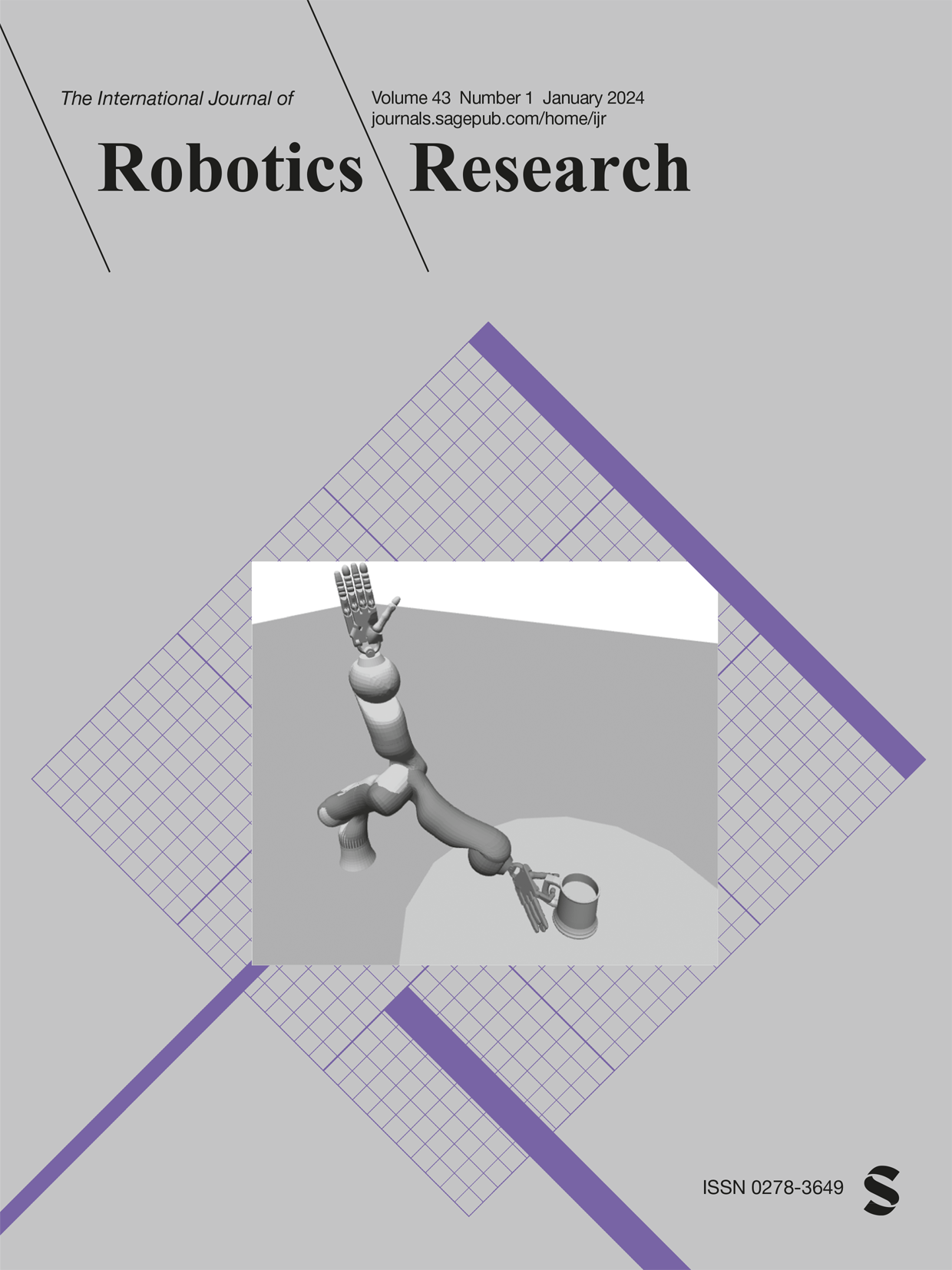多层运动规划:一种纤维束公式
IF 5
1区 计算机科学
Q1 ROBOTICS
引用次数: 15
摘要
通过使用多层抽象,高维运动规划问题通常可以得到更快的解决。虽然有各种方法可以正式捕获多层抽象,但我们根据纤维束将它们公式化。纤维束本质上使用局部积空间描述状态空间的低维投影,这使我们能够根据束限制和束截面简明地描述和推导新的算法。给定这样的结构和相应的允许约束函数,我们开发了高维状态空间的高效且渐近最优的基于采样的运动规划方法。这些方法通过使用纤维束原语来利用纤维束的结构。这些原语用于创建新的包规划器、快速探索商空间树(QRRT*)和商空间路线图规划器(QMP*)。这两个规划都是概率完备的,几乎肯定是渐近最优的。为了评估我们的捆绑规划器,我们在四个低维场景和八个高维场景的基准上将它们与经典的基于抽样的规划器进行了比较,这些场景的自由度从21到100不等,包括多个机器人和非完整约束。我们的研究结果显示了两到六个数量级的改进,并强调了多层运动规划器的效率以及使用纤维束术语开发多层抽象的好处。本文章由计算机程序翻译,如有差异,请以英文原文为准。
Multilevel motion planning: A fiber bundle formulation
High-dimensional motion planning problems can often be solved significantly faster by using multilevel abstractions. While there are various ways to formally capture multilevel abstractions, we formulate them in terms of fiber bundles. Fiber bundles essentially describe lower-dimensional projections of the state space using local product spaces, which allows us to concisely describe and derive novel algorithms in terms of bundle restrictions and bundle sections. Given such a structure and a corresponding admissible constraint function, we develop highly efficient and asymptotically optimal sampling-based motion planning methods for high-dimensional state spaces. Those methods exploit the structure of fiber bundles through the use of bundle primitives. Those primitives are used to create novel bundle planners, the rapidly-exploring quotient space trees (QRRT*), and the quotient space roadmap planner (QMP*). Both planners are shown to be probabilistically complete and almost-surely asymptotically optimal. To evaluate our bundle planners, we compare them against classical sampling-based planners on benchmarks of four low-dimensional scenarios, and eight high-dimensional scenarios, ranging from 21 to 100 degrees of freedom, including multiple robots and nonholonomic constraints. Our findings show improvements up to two to six orders of magnitude and underline the efficiency of multilevel motion planners and the benefit of exploiting multilevel abstractions using the terminology of fiber bundles.
求助全文
通过发布文献求助,成功后即可免费获取论文全文。
去求助
来源期刊
CiteScore
22.20
自引率
0.00%
发文量
34
审稿时长
6-12 weeks
期刊介绍:
The International Journal of Robotics Research (IJRR) has been a leading peer-reviewed publication in the field for over two decades. It holds the distinction of being the first scholarly journal dedicated to robotics research.
IJRR presents cutting-edge and thought-provoking original research papers, articles, and reviews that delve into groundbreaking trends, technical advancements, and theoretical developments in robotics. Renowned scholars and practitioners contribute to its content, offering their expertise and insights. This journal covers a wide range of topics, going beyond narrow technical advancements to encompass various aspects of robotics.
The primary aim of IJRR is to publish work that has lasting value for the scientific and technological advancement of the field. Only original, robust, and practical research that can serve as a foundation for further progress is considered for publication. The focus is on producing content that will remain valuable and relevant over time.
In summary, IJRR stands as a prestigious publication that drives innovation and knowledge in robotics research.

 求助内容:
求助内容: 应助结果提醒方式:
应助结果提醒方式:


